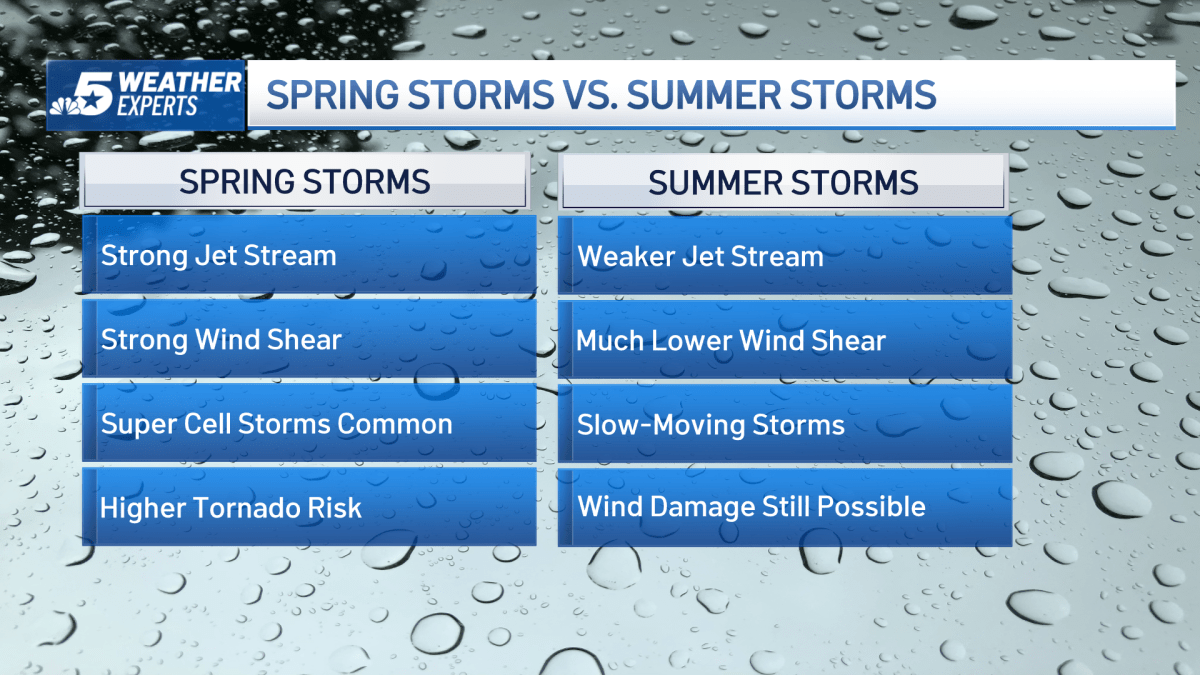How summer thunderstorms are different from spring thunderstorms
Some may think that thunderstorms are the same throughout the year. However, a closer look reveals there is a significant difference between springtime thunderstorms and summertime storms. The difference between springtime thunderstorms and summer storms is significant, as spring thunderstorms tend to produce high-end severe weather, including large hail and tornadoes. While summer storms can still become severe, they are less likely to be as violent as spring storms. The severe weather season in the Plains states, which runs from March through June, is when the majority of severe weather occurs annually. However, as the calendar changes from spring to summer, the ingredients for severe weather become harder to find. The jet stream in the summer becomes weaker and shifts north into the Central and Northern Plains, resulting in much of the upper-level energy lost. Summer storms tend to be limited to the afternoon and early evening when the days are warmest, but still produce dangerous lightning and downburst winds.

gepubliceerd : 12 maanden geleden door Rick Mitchell in Weather
Some may think that thunderstorms are the same throughout the year. However, a closer look reveals there is a significant difference between springtime thunderstorms and summertime storms.
In short, spring thunderstorms tend to be much more capable of producing high-end severe weather, including very large hail and tornadoes. While summer storms can still become severe, they are far less likely to be as violent as spring storms.
The severe weather season in the Plains states runs from March through June. This is when the majority of severe weather occurs annually. The reason for this is that there are plentiful ingredients that can lead to the development of severe storms, including supercell thunderstorms that produce very large hail, damaging winds, and, of course, tornadoes.
These ingredients include a powerful jet stream, strong wind shear, plentiful moisture, and sometimes large temperature gradients. If all of these come together at the right time and place, severe weather can occur.
But as the calendar changes from spring to summer, the ingredients for severe weather become harder to find. One of the biggest changes in the seasons is the jet stream. In the summer, the jet stream becomes much weaker than in the spring. It also leaves the Southern United States and shifts farther north into the Central and Northern Plains. By doing so, much of the upper-level energy needed for severe weather is lost.
By losing the jet stream energy, summer thunderstorms are dependent on much weaker weather systems to help them develop. The storms tend to be limited to the afternoon and early evening when the days are warmest.
Once the sun sets, most summer storms dissipate. The storms have weaker updrafts and mainly produce rain. Of course they still produce dangerous lightning and occasional downburst winds in excess of 60 mph.
Thanks to a weaker jet stream and a lack of wind shear, summer thunderstorms are usually not as ferocious as spring storms. Of course, summer storms can still produce dangerous lightning, heavy rain, and damaging winds. So, when storms are expected, make sure you are weather-aware.
